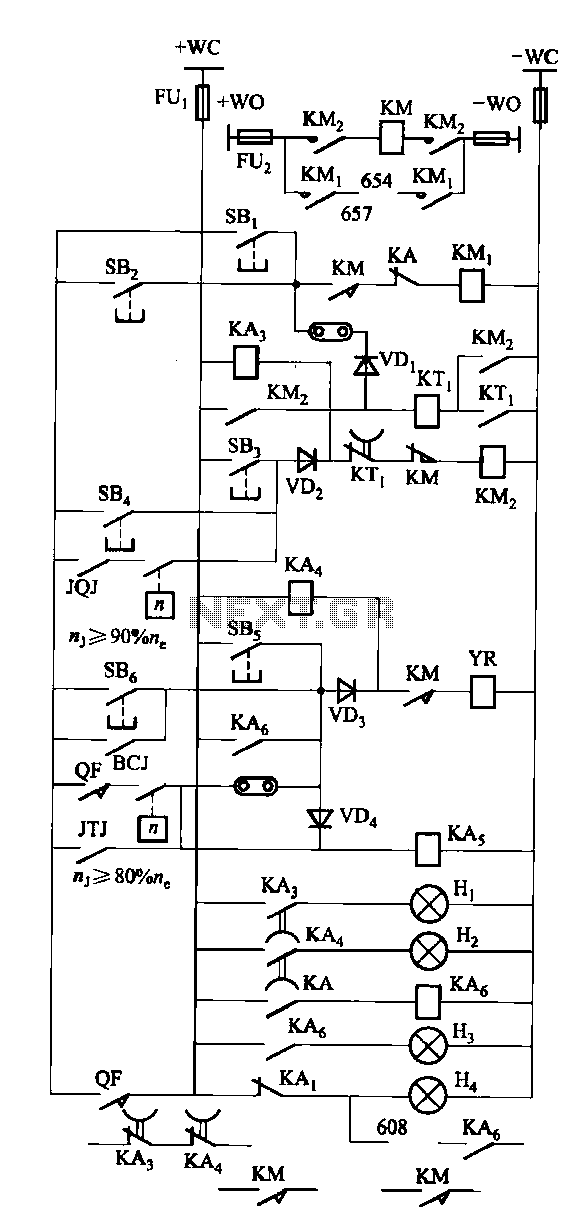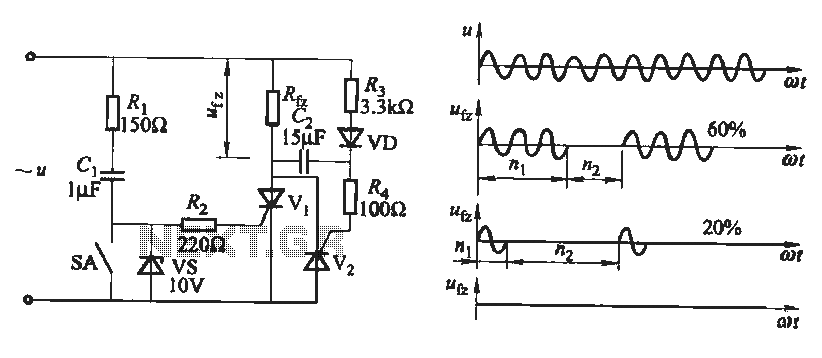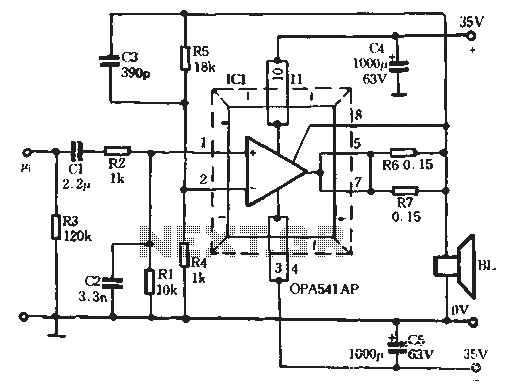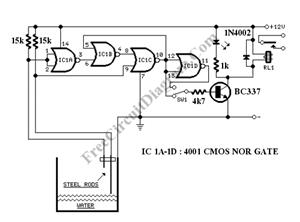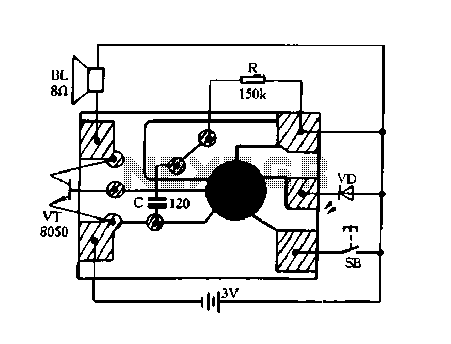
Burglar Alarm Circuit with Diagram
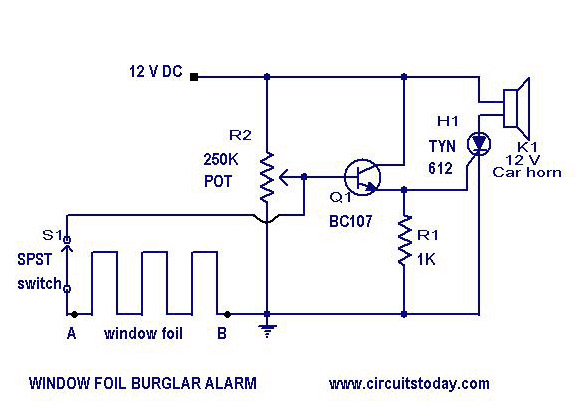
A simple burglar alarm circuit diagram and schematic. This can be used as an anti-theft alarm by attaching the burglar alarm circuit to window foil.
The burglar alarm circuit is designed to provide a basic security solution for residential or commercial properties. The circuit typically consists of a few essential components: a power source, a sensor, a triggering mechanism, and an output alert system.
The power source, usually a battery or a DC power supply, provides the necessary voltage to operate the circuit. The sensor, which can be a simple switch or a more sophisticated device such as a magnetic reed switch, detects unauthorized access. This sensor is often installed on windows or doors, where it can be activated by the opening or breaking of the seal.
When the sensor is triggered, it completes the circuit, allowing current to flow to the triggering mechanism, which may include a relay or a transistor. This component amplifies the signal and activates the output alert system, which can be a loud siren, a flashing light, or even a notification system that alerts the property owner via a mobile device.
For installation, the burglar alarm circuit should be connected to a window foil, which acts as a conductive path. If the window is tampered with, the foil breaks the circuit, triggering the alarm. This simple yet effective method helps deter potential intruders and enhances the overall security of the premises.
The schematic representation of this circuit typically includes symbols for each component, clearly indicating their connections and functionality. Proper attention to component ratings and circuit layout is essential for ensuring reliable operation and minimizing false alarms.A simple burglar alarm circuit diagram and schematic. This can be used as anti theft alarm by attaching the burglar alarm circuit to window foil.. 🔗 External reference
The burglar alarm circuit is designed to provide a basic security solution for residential or commercial properties. The circuit typically consists of a few essential components: a power source, a sensor, a triggering mechanism, and an output alert system.
The power source, usually a battery or a DC power supply, provides the necessary voltage to operate the circuit. The sensor, which can be a simple switch or a more sophisticated device such as a magnetic reed switch, detects unauthorized access. This sensor is often installed on windows or doors, where it can be activated by the opening or breaking of the seal.
When the sensor is triggered, it completes the circuit, allowing current to flow to the triggering mechanism, which may include a relay or a transistor. This component amplifies the signal and activates the output alert system, which can be a loud siren, a flashing light, or even a notification system that alerts the property owner via a mobile device.
For installation, the burglar alarm circuit should be connected to a window foil, which acts as a conductive path. If the window is tampered with, the foil breaks the circuit, triggering the alarm. This simple yet effective method helps deter potential intruders and enhances the overall security of the premises.
The schematic representation of this circuit typically includes symbols for each component, clearly indicating their connections and functionality. Proper attention to component ratings and circuit layout is essential for ensuring reliable operation and minimizing false alarms.A simple burglar alarm circuit diagram and schematic. This can be used as anti theft alarm by attaching the burglar alarm circuit to window foil.. 🔗 External reference
